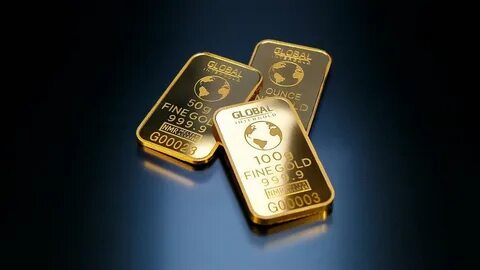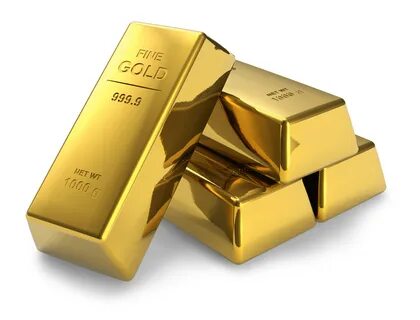The 24-Karat Gold Price Soars Amid Global Economic Uncertainty
In recent months, the 24 gold price has experienced a significant spike as global economic uncertainties continue to impact the financial markets. Investors are turning to the precious metal as a safe haven in the face of fluctuating currencies and geopolitical tensions. This surge in the 24-karat gold price reflects a growing demand for the commodity as a hedge against economic instability. In this article, we will delve into the factors driving the rise in the 24-karat gold price and its implications for the global economy.
24-Karat Gold price has been soaring amidst global economic uncertainty. As an investor, the price increase indicates a safe-haven asset that can act as a hedge against inflation and economic instability. The high demand for gold during uncertain times has driven its price to new heights, making it an attractive investment option for many. In addition to its investment appeal, gold also has a strong cultural and aesthetic value, making it a popular choice for luxury goods and jewelry. With economic uncertainty likely to persist, the demand for gold is expected to remain strong, further driving its price up.
Understanding the Fluctuations of 24 Gold Price

Understanding the fluctuations of 24 gold price involves an analysis of various factors such as demand and supply dynamics, geopolitical events, inflation rates, interest rates, currency movements, and market speculation. Gold is considered a safe-haven asset and tends to rally during times of economic uncertainty and geopolitical tensions. Additionally, central bank policies and macroeconomic indicators play a significant role in influencing the price of gold. Investors and traders closely monitor these factors to anticipate price movements and make informed investment decisions. Technical analysis and chart patterns are also used to identify trends and potential turning points in the gold market. Overall, understanding the fluctuations of 24 gold price requires a comprehensive understanding of global economic and geopolitical dynamics.
The Impact of Global Events on 24 Gold Price

The impact of global events on the price of gold is significant. Gold is often seen as a safe-haven asset, meaning that during times of economic or political instability, investors tend to flock to gold as a way to protect their wealth. This means that events such as geopolitical tensions, trade wars, and economic downturns can all lead to an increase in demand for gold, and therefore an increase in price.
For example, the price of gold tends to rise during times of uncertainty, such as during the 2008 financial crisis, the Brexit referendum, and the COVID-19 pandemic. Similarly, political events such as elections or changes in leadership can also impact the price of gold, as investors seek safe-haven assets in response to potential policy changes or geopolitical uncertainty.
Conversely, periods of stability and economic growth can lead to a decrease in the price of gold, as investors may be more inclined to invest in riskier assets such as stocks and bonds. Overall, global events play a significant role in shaping the price of gold, making it an important asset for investors to monitor.
How to Predict the Future of 24 Gold Price

To predict the future of 24 gold price, analysts typically consider a range of economic indicators and market trends. These may include factors such as inflation rates, interest rates, geopolitical events, and demand for gold in various industries. Additionally, the performance of other assets such as stocks and bonds, as well as the strength of the US dollar, can also impact the price of gold. Technical analysis, which involves studying historical price movements and patterns, is another common method used to forecast future gold prices. Ultimately, predicting the future of gold prices involves a comprehensive analysis of a wide range of macroeconomic and market-specific factors.
Comparing 24 Gold Price to Other Precious Metals

Comparing 24k gold prices to other precious metals, such as silver, platinum, and palladium, can give investors insights into the relative value of each metal in the market. Gold is typically more expensive than other precious metals due to its scarcity and perceived value. However, the prices of these metals can fluctuate based on various factors including demand, global economic conditions, and geopolitical events. Investors often consider diversifying their portfolios with a mix of precious metals to balance risk and potentially increase returns. Understanding the price dynamics of each metal is essential for informed investment decisions.
Investing in 24 Gold: Is it Worth the Price?
Investing in 24-karat gold can be worth the price as it is considered a stable and reliable investment. Gold has historically maintained its value over time and is often seen as a hedge against inflation and economic instability. Additionally, gold offers diversification to a portfolio and can serve as a store of value. However, it’s important to carefully consider the current market conditions and consult with a financial advisor before making any investment decisions.
The Role of Inflation in Influencing 24 Gold Price
The role of inflation in influencing gold prices is significant. In times of high inflation, the value of currency declines, leading investors to seek alternative stores of value such as gold. This increased demand for gold can drive up its price. Conversely, low inflation or deflation can weaken demand for gold as a hedge against inflation, potentially causing its price to decrease. As a result, inflation trends play a crucial role in determining the price of gold in the market.
The Relationship Between 24 Gold Price and the Stock Market
See also: gold usa
The relationship between gold prices and the stock market can be complex and multifaceted. In general, gold is seen as a safe-haven investment during times of economic uncertainty and market volatility. As a result, when stock prices are falling, investors may turn to gold as a way to protect their wealth. This can cause an increase in demand for gold and drive up its price.
Conversely, when the stock market is performing well and investor confidence is high, the demand for gold may decrease, causing its price to fall. In this way, there is an inverse relationship between stock prices and gold prices.
However, it’s important to note that this relationship is not always consistent, and there are many other factors that can influence the price of gold and the stock market. These can include changes in interest rates, inflation, geopolitical events, and currency movements, among others. As a result, while there may be a general tendency for gold prices to move in the opposite direction of stock prices, the relationship is not always straightforward and can be influenced by a wide range of external factors.
Historical Trends in 24 Gold Price: What Can We Learn?
Historical trends in 24 gold price can provide valuable insights into the factors that have influenced its value over time. By analyzing these trends, we can better understand the impact of geopolitical events, economic conditions, and market dynamics on the price of gold. This information can be used to inform investment decisions, hedge against inflation, and assess the long-term value of gold as a store of wealth. Additionally, studying historical trends in gold prices can provide a broader perspective on its role in the global economy and its significance as a traditional safe haven asset.
Factors that Drive the Volatility of 24 Gold Price
1. Geopolitical events – Global economic and political instability can lead to fluctuations in gold prices as investors seek safe-haven assets during times of uncertainty.
2. Inflation – Gold prices often rise in response to inflationary pressures as investors seek to hedge against the eroding value of fiat currencies.
3. Central bank policies – Monetary policy decisions, such as interest rate changes and quantitative easing, can impact gold prices as they influence the opportunity cost of holding gold and the value of the US dollar.
4. Dollar strength – Gold prices are inversely correlated with the strength of the US dollar, as a stronger dollar makes gold more expensive for holders of other currencies.
5. Demand and supply – The demand for gold in jewelry, technology, and investment, as well as the supply from mining and central bank sales, can impact gold prices.
6. Speculative trading – The behavior of speculative traders and institutional investors in the futures and options markets can lead to short-term volatility in gold prices.
The Importance of Staying Informed About 24 Gold Price
Staying informed about 24K gold price is crucial for anyone involved in the gold trade or interested in gold investment. The price of gold fluctuates daily based on different economic and geopolitical factors, and these fluctuations can directly impact your investment portfolio or gold-related business. By staying informed about the latest gold prices, you can make better-informed decisions about buying, selling, or holding gold. Additionally, staying informed about gold prices can help you take advantage of potential investment opportunities or protect yourself from potential losses. Whether you are a gold trader, investor, or simply someone interested in gold, keeping up with 24K gold prices is essential for making sound financial decisions.
In conclusion, the soaring price of 24-karat gold amidst global economic uncertainty reflects the shift in investor sentiment towards safe-haven assets. As geopolitical and economic tensions continue to affect markets, gold has emerged as a reliable store of value for many. The 24 gold price is likely to remain elevated as long as uncertainty persists, making it a key asset to watch in the coming months.
See also
https://or.bullionvault.fr/Cours-De-L-Or.do
https://www.orobel.biz/cours-metaux-precieux/cours-or-prix-or
https://www.orencash.fr/cours-de-l-or/
https://www.veracash.com/fr/cours-or
https://www.bdor.fr/cours-or
https://www.gold.fr/